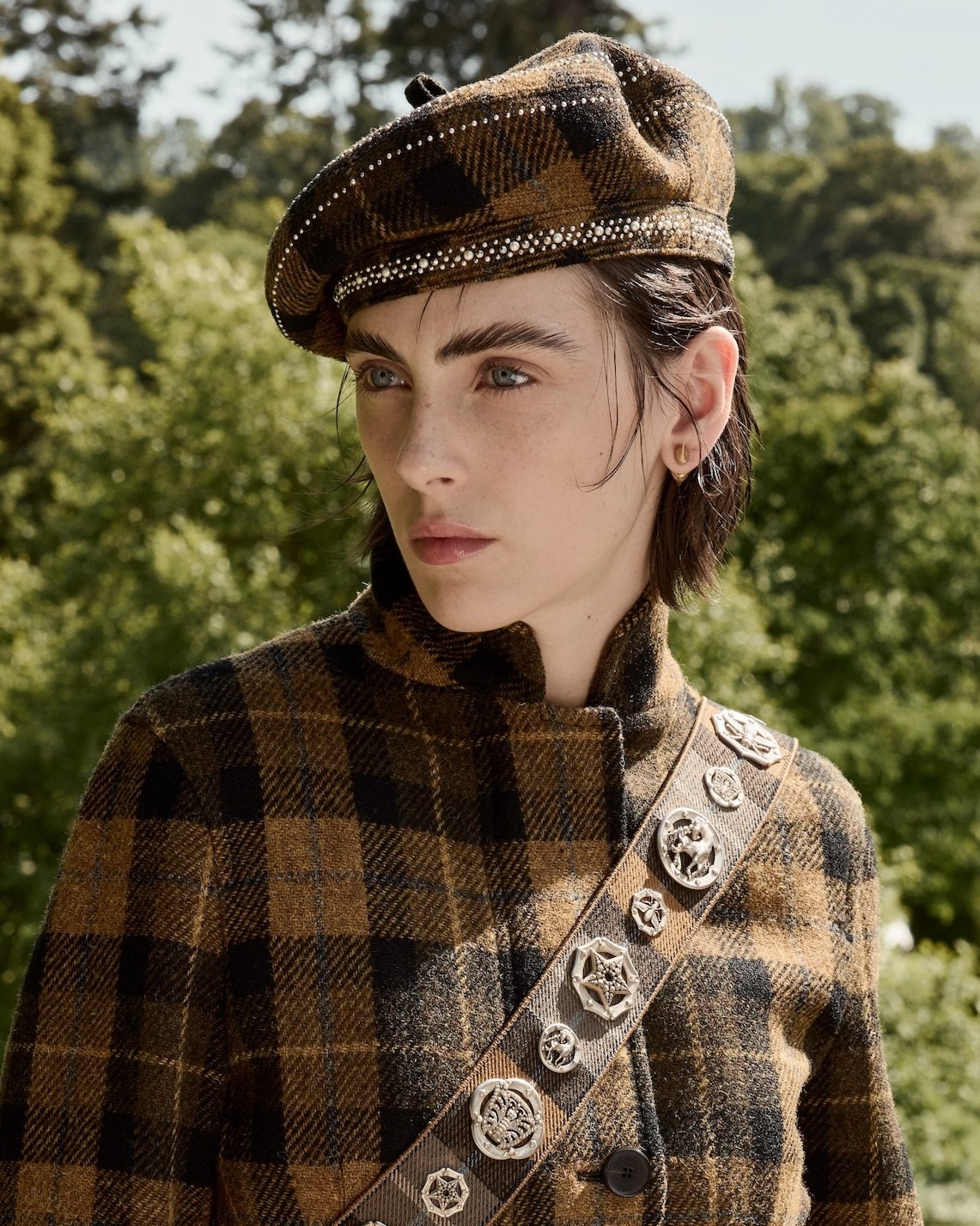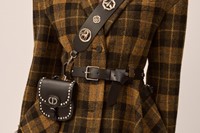Certain fashion houses have histories that stretch so far and wide, almost any theme or locale can find anchor in their heritage. Christian Dior is one such label: take Scotland, an unexpected bedfellow for a storied Parisian label, even if Dior himself named a look in his sophomore collection Écosse. But he also presented a collection in Perthshire in 1951, and again at a charity fashion show in 1955. After his death and under the ward of Yves Saint Laurent – coincidentally, also under Marc Bohan, who at that point was head of Christian Dior London – the house staged another charity fashion show at Scone Palace. And, of course, through the history of Dior there have been asides to Scotland, heathery tweeds and Scottish tartans and riffs on kilts. It’s all there, in the past, waiting to come back.
So there’s the foundation Maria Grazia Chiuri needed to ground her journey north of the border, staging her latest Dior Cruise collection in the formal terraced gardens of Drummond Castle, where the models wound their way around shrubs and flowers in early spring bud, the beds and topiaries seeming to emulate embroidery placements.
That was no accident: one of the key inspirations behind this collection was the book Embroidering Her Truth: Mary, Queen of Scots and the Language of Power by Clare Hunter. Mary Queen of Scots was imprisoned for the final 18 and a half years of her life before her execution in 1587. She spent much of that time on embroidery, some of which is now held in the collection of the Victoria and Albert Museum. Nicholas White, an envoy of Elizabeth I, reported of a conversation with Mary: “I asked her Grace, since the weather did cut off all exercises abroad, how she passed the time within. She said that all the day she wrought with her needle.”
But this was no passive pastime. Filled with veiled symbols of protest – a phoenix, a powerful symbol of rebirth, or a figure rising again; and even a crowned ginger cat menacing a meek, grey mouse – they are powerful autobiographical totems, worked by the doomed queen’s own hand.
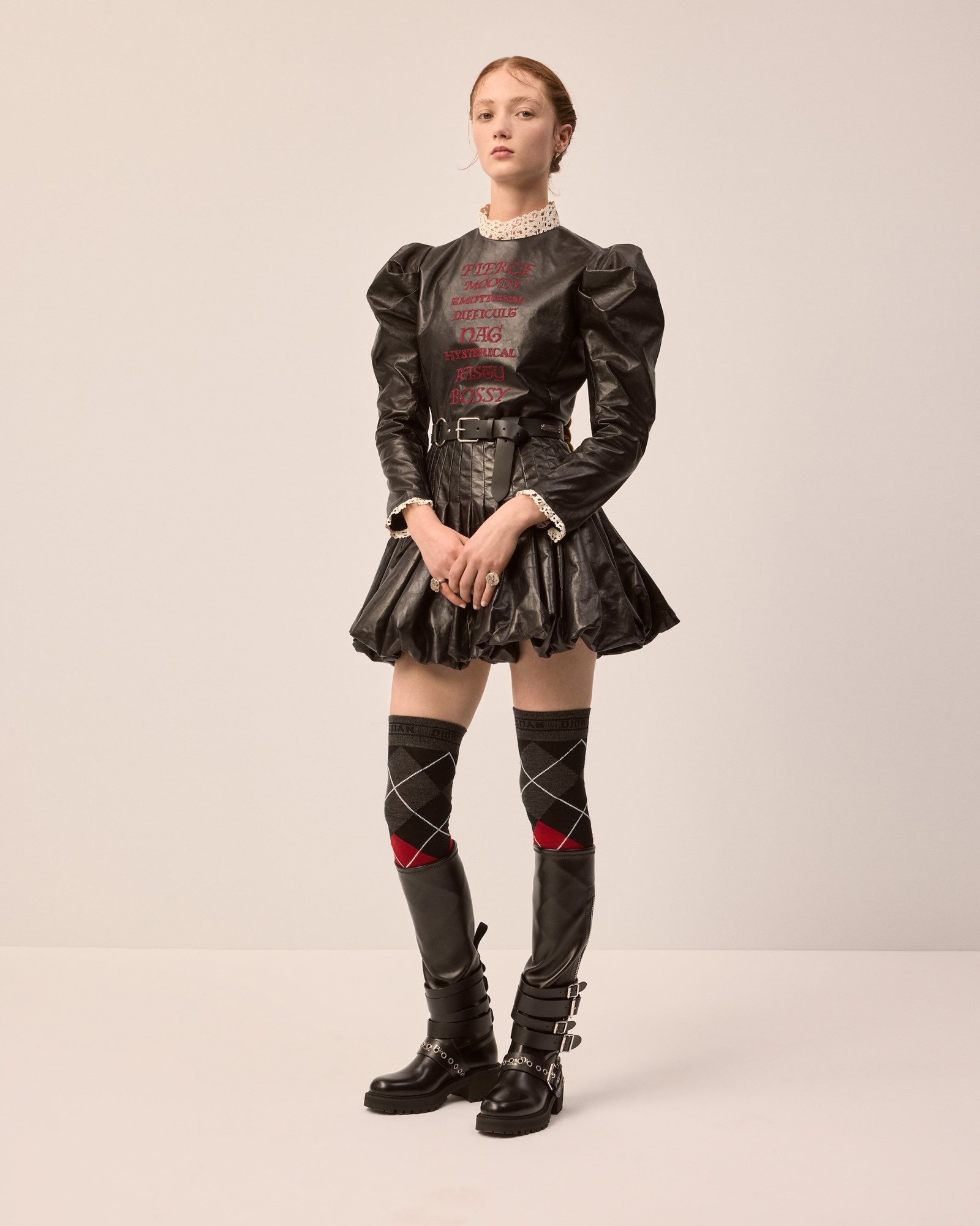
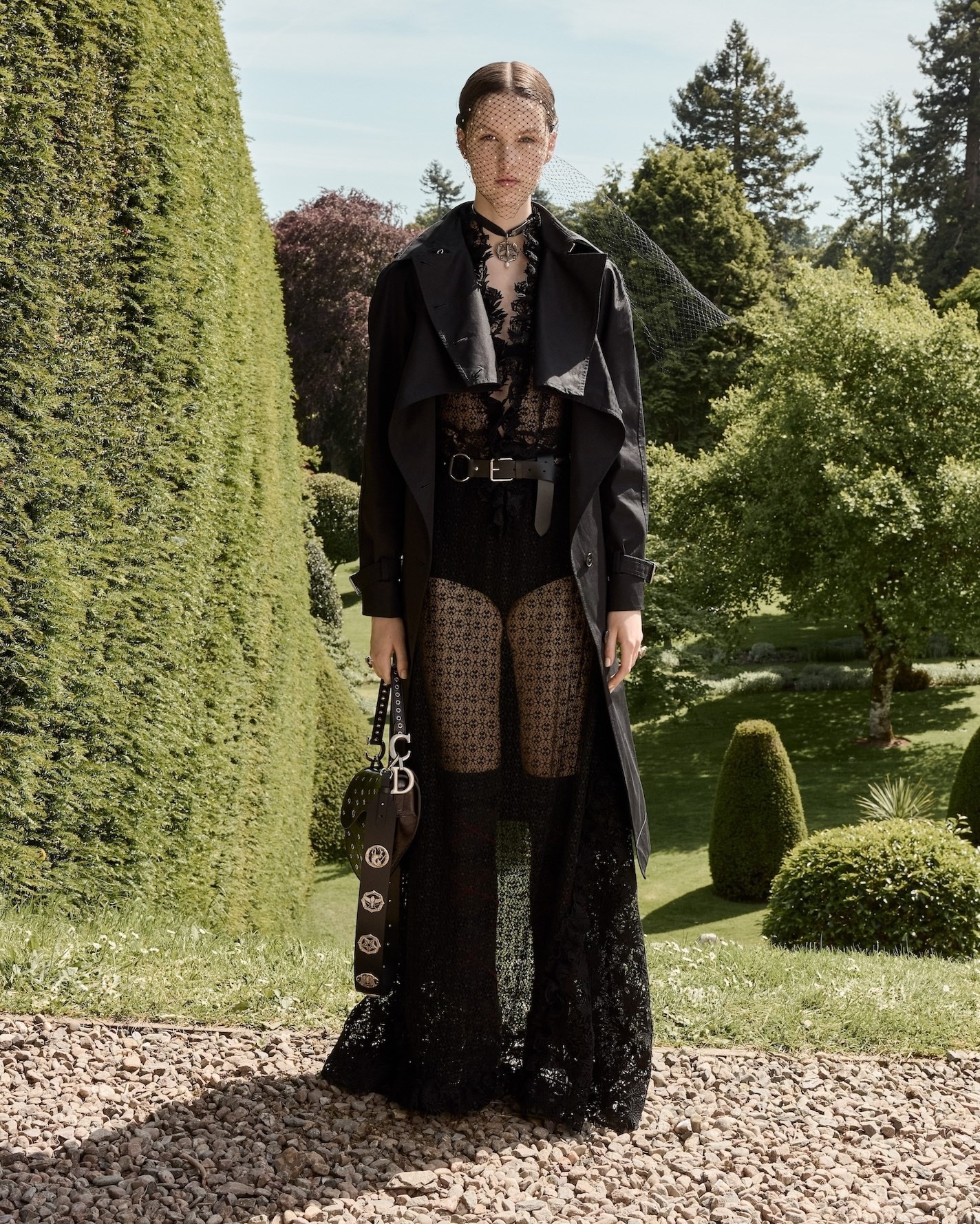
A woman scorned, protesting through her work – Mary Queen of Scots naturally appeals to Chiuri, who has taken inspiration from feminist icons and iconography across the ages. So this collection was an ode to her, in its rich surface decoration of embroideries and laces, its Tudor gestures of high collars and heavy jewels. But it was also a wider love letter to Scotland, and to Scottish craft – plenty of tartan, running the gamut from romantic Braveheart historicism to punk, collaboration with Johnstons of Elgin, Esk cashmere and Harris Tweed, and co-designed pieces with Samantha McCoach of the brand Le Kilt. Long knit became trailing renaissance gowns, tartan dresses were cut away to allow the limbs to move freely, and even sinuous gowns in metallic fragile laces wound up resembling armour more than delicate princesses. Indeed, fusing those hardy fabrications with Chiuri’s 16th-century heroine, Dior’s women this time felt like warriors more than Dior’s conventional Femmes Fleur. As they marched through those flowers, the women weren’t the embroidery – indeed, they seemed to be tramping it underfoot. And kudos to Chiuri for ignoring the suggested connotations of Cruise – there was little flimsy or summery about this offering, which instead felt built for all the eventualities of life, then and now.
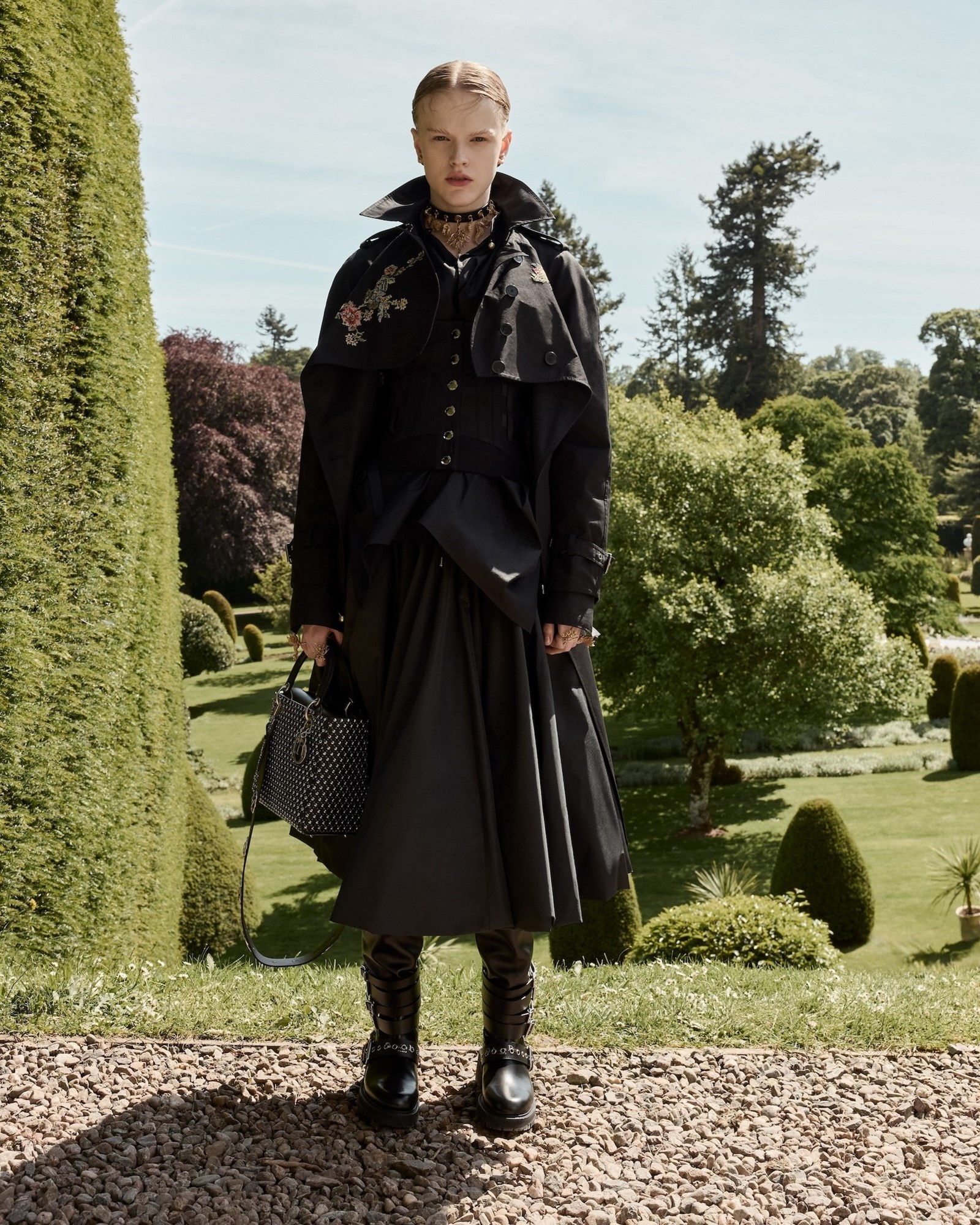
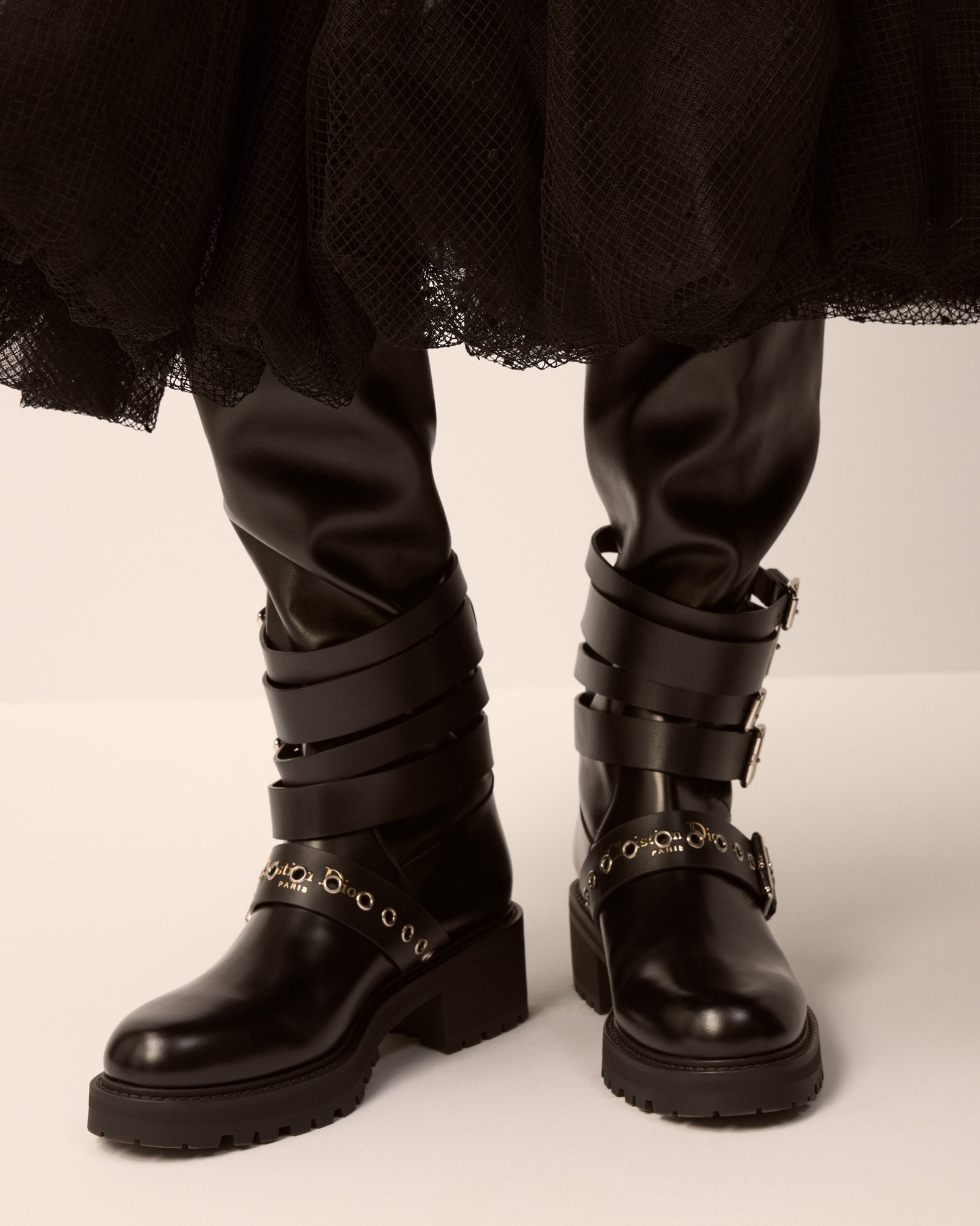
In all, though, the most interesting aspect was how lightly the collection bore the weight of its themes, how natural it all seemed to re-tread the path Christian Dior himself followed. Although the attitude was decidedly 21st century – via the 1500s.
